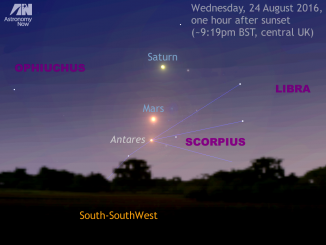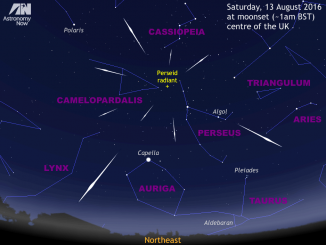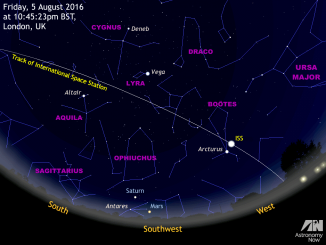
See the triple lineup of Antares, Mars and Saturn tonight
Observers in the British Isles with a clear sky one hour after sunset on 24 August should find a location that offers an unobstructed view of the south-southwest horizon. Here you will see first-magnitude star Antares in the constellation Scorpius, Mars and Saturn all in a line easily encompassed by low-power binoculars in the bright twilight.









